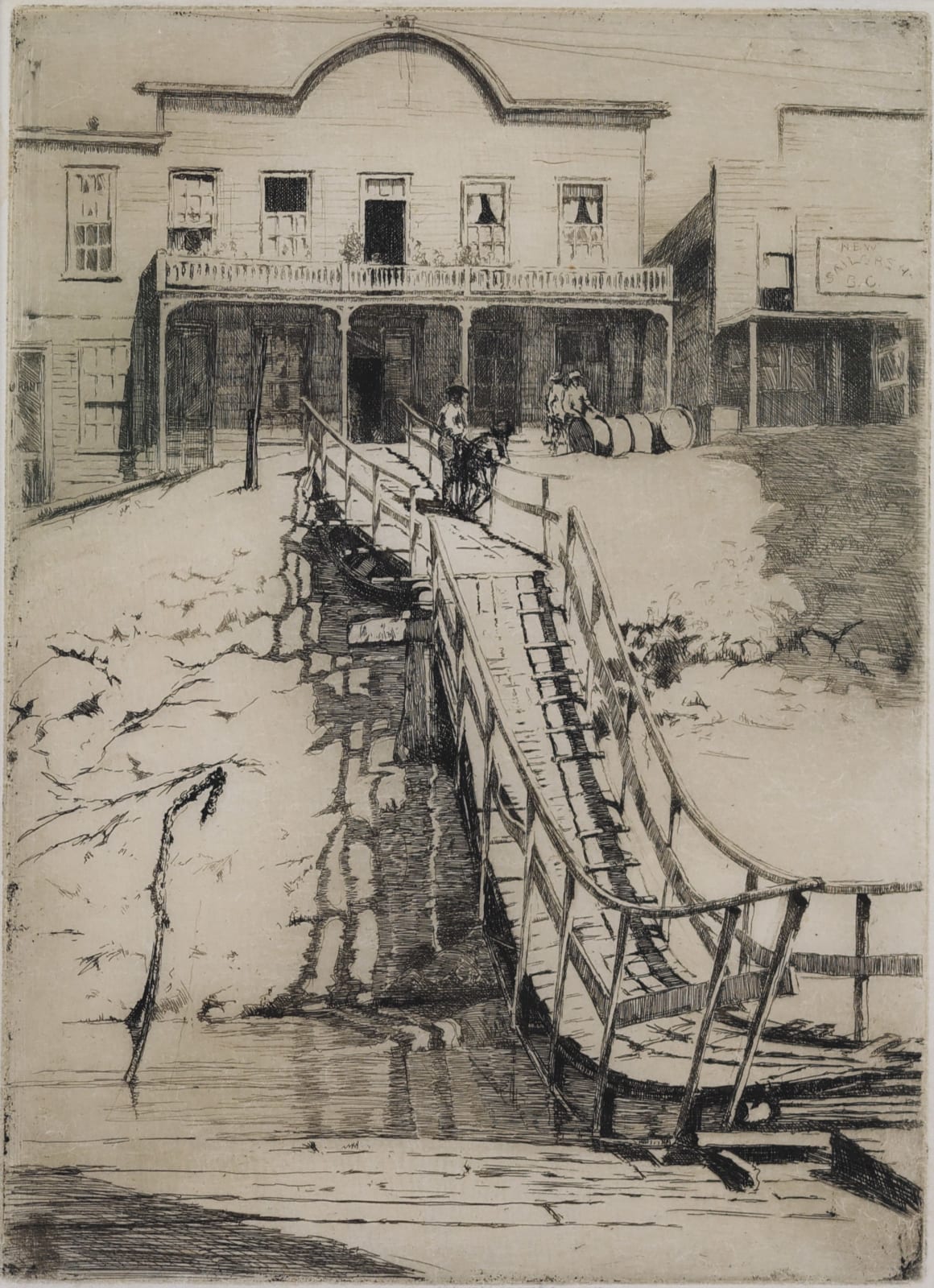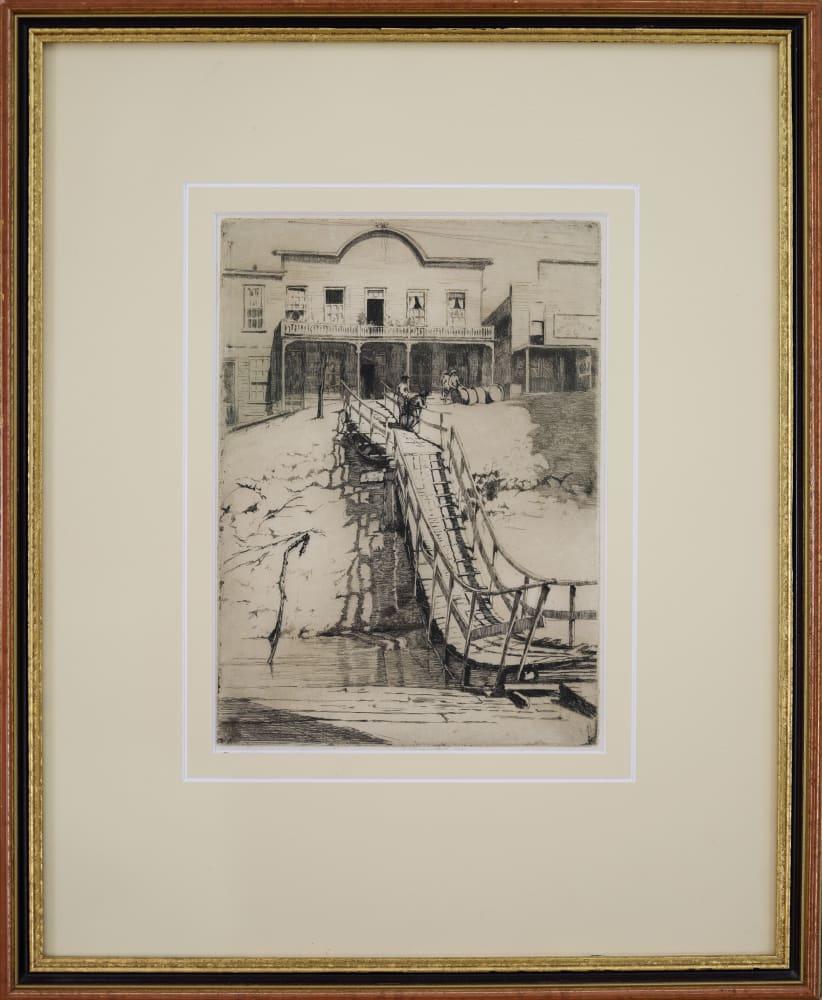Ernest Stephen Lumsden British, 1883-1948
protected by museum glass
Further images
The etching Victoria Road, Esquimalt by Ernest Stephen Lumsden presents a historic scene with a richly detailed view of a waterfront street. It captures the essence of a bustling port area in the early 20th century. The focal point of the composition is a wooden bridge, likely a gangplank, leading the viewer's eye towards the classical façade of a building that could be a market or a place of gathering, indicative of Esquimalt's naval and trading heritage.
The scene is devoid of the modern trappings of vehicles or technology, instead featuring barrels and carts, suggesting the daily commerce of goods, perhaps coming from ships docked nearby. Figures are seen engaged in various activities, some crossing the bridge, while others appear to be conversing or involved in work, adding life and narrative to the scene.
Lumsden's attention to detail is evident in the textural contrast between the reflective water, the roughness of the wooden planks, and the well-worn path leading up to the bridge. There's a sense of quiet activity; it’s not bustling with energy but instead carries a steady, purposeful rhythm of a working area.






